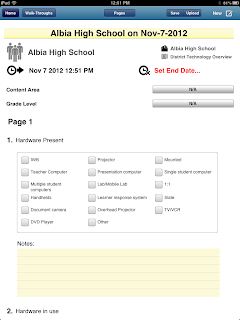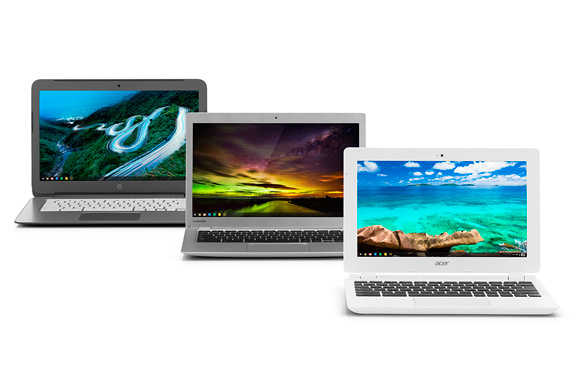I am reading a book about Personal Learning Networks by Will Richardson.
The way we learn is changing. When I want to solve a tech problem, I often use Google to look up the exact error or situation. I almost always find a solution. The secret is learning key words to describe exactly what you are researching. When looking for how to do something, I watch YouTube or use Atomic Learning videos if it is tech related. This summer my son planted 15,000 strawberry plants. There are lots of YouTube videos and different techniques for making strawberry jam and we have experimented with many of them. My son also helped me realize the importance of Facebook and marketing your product- no matter what the product is. I like using Facebook to check in with family and friends, but I am not very good at posting. At first Twitter seemed like a waste of time to me, but it is all about connecting with the right people. As I am learning from the book I am reading, it helps to start with your personal interests. What is amazing is how easy it is to find people with interesting information to share once you get started. It is more explosive than Facebook. These are people you do not even know, you just share a similar interest. Yes, there is a downside and I quickly learned that unwanted followers can be blocked. Some of the shifts we will see in learning is it will become more personalized, more connected with others, more ways to contribute and not just consume, and more ways to be creative:)
http://www.amazon.com/Personal-Learning-Networks-Connections-Transform/dp/193554327X
Monday, December 10, 2012
Wednesday, November 7, 2012
Intentional Follow-Ups and Building Walk-Arounds
You might see one of the Great Prairie tech specialists or coaches walking around your school building, poking away at their iPad as they walk from room to room. Here's what we're doing...
We have two data-collection tools that we use in schools, and we use them for different puposes.
The first is a Google Form that we use to monitor implementation, after a teacher has received a training, participated in a PD session, etc. The form consists of these questions:
The second data collection tool is an eWalk template that we use to improve our services to buildings as a whole. We call these "walk-arounds," not walk-throughs, to differentiate them from instructional rounds. The template consists of these questions:
We have two data-collection tools that we use in schools, and we use them for different puposes.
Intentional Follow-Ups
 |
| A screenshot of our Intentional Follow-Ups form |
- What are we following-up on? (Ex.: interactive whiteboard training, Google Apps training)
- Is the teacher implementing what they were trained on? (rated on a scale of 0 to 5)
- Are the components of successful tech integration present? (adequate hardware, content [TPACK], access, PD, and tech support)
- What challenges do the teachers face?
- What are our next steps?
We use this data to plan for future trainings and support.
Building Walk-Arounds
 |
| A screenshot of our Walk-Around eWalk template |
- What hardware is present? (we have an extensive checklist of possible hardware that could be in the room)
- What hardware is being used? (what is actually being used a the time we're looking in the room)
- What is the instructional setting? (teacher-led, student-led, project-based, whole group, small group, or individual/independent)
- What are the students doing? What digital content are they accessing, and what tools are they using?
- Are the students producing and creating, or are they passive and receiving? (Bloom's taxonomy)
These are pretty broad questions, but the data does give a good overview of how much technology is available for teachers, how it is being used, and at what level. Again, we use this data to plan for future trainings and support. And we share this data with districts so that they can plan for future purchases and trainings.
Wednesday, October 31, 2012
Coding in Google Calendars
Google Calendars are easy-to-use, flexible, and collaborative. And they can also be used for analyzing Agency services!
At Great Prairie AEA, each department has started to add codes to their calendar entries. The Instructional Technology team uses these codes:
At Great Prairie AEA, each department has started to add codes to their calendar entries. The Instructional Technology team uses these codes:
- TS- Targeted Integration Support
- IF- Intentional Follow-Ups
- PD- Tech PD
- TA- Technical Assistance
- TP- Tech Planning
We also list the service we provide in the event name, and where (or for whom) we are providing the service. Here are some examples:
- IF- IWB Winfield
- PD- Google Apps Van Buren
- TP- Chromebooks Danville
We list the district in the "Where" box of the event details, and describe what we plan to do (and what we did) in the description box.
Why do we go to all this trouble?
We can pull the event data from our Google Calendards into Google Spreadsheets, calculate the number of hours we spend in a district (or in a service), and have an instant log of all the activities that have occurred in specific districts, or by specific consultants, or with specific services.
The best part is that consultants don't have to fill out separate activity logs for the work they do. They just keep everything in one place.
The best part is that consultants don't have to fill out separate activity logs for the work they do. They just keep everything in one place.
That's pretty powerful!
--Seth
Chromebooks and Chromeboxes
A big question in instructional technology is, "How can schools afford to get enough computers for each student?" Some schools get full laptops, netbooks, iPads, Android tablets, or allow a bring-you-own-device environment in their schools. Each type of device has its pluses and minuses.
Some districts (like Council Bluffs) use Chromebooks for their students. You can learn more about Chromebooks here.
The problem used to be that Chromebooks were about the same price as cheap, full laptops. That has changed. Google recently announced a new Chromebook that only costs $249.
Compare the $249 Chromebook with a $999 MacBook Air. They both have an 11-inch screen, both weigh about 2-1/2 pounds, and both have a multi-touch trackpad, etc. Of course, the MacBook Air has all the advantages, and software, of a Mac. But for students who use computers mainly for web-browsing, and use online tools more than downloaded applications, do they need more than a Chromebook? A tech coordinator could buy four Chromebooks for the price of one Air.
Chromebooks have definite limitations, just like any device. But the price might make those limitations less important.
Here's a video of the new Chromebook:
For situations where a desktop computer is preferable to a laptop (like in a library, or a computer lab), schools can purchase Chromeboxes.
These work the same way as Chromebooks. Schools can attach their current monitors, keyboards, and mice, and can have desktop computers that are always updated, and always virus free.
This video is a good pros and cons look at the ChromeOS:
We are moving in a different era of computer use. Think about how you use your computer--do you mainly use applications that you paid money for, or do you work mainly from a web browser? I do most of my work from a web browser (check my email, type on documents with Google Docs, schedule events with Google Calendar, etc.). I just ordered a Chromebook, and I am going to try to use it exclusively for a week, to see how much I really need a full laptop. I'll blog about how it goes, once my $249 Chromebook arrives...
Some districts (like Council Bluffs) use Chromebooks for their students. You can learn more about Chromebooks here.
The problem used to be that Chromebooks were about the same price as cheap, full laptops. That has changed. Google recently announced a new Chromebook that only costs $249.
Compare the $249 Chromebook with a $999 MacBook Air. They both have an 11-inch screen, both weigh about 2-1/2 pounds, and both have a multi-touch trackpad, etc. Of course, the MacBook Air has all the advantages, and software, of a Mac. But for students who use computers mainly for web-browsing, and use online tools more than downloaded applications, do they need more than a Chromebook? A tech coordinator could buy four Chromebooks for the price of one Air.
Chromebooks have definite limitations, just like any device. But the price might make those limitations less important.
Here's a video of the new Chromebook:
For situations where a desktop computer is preferable to a laptop (like in a library, or a computer lab), schools can purchase Chromeboxes.
These work the same way as Chromebooks. Schools can attach their current monitors, keyboards, and mice, and can have desktop computers that are always updated, and always virus free.
This video is a good pros and cons look at the ChromeOS:
We are moving in a different era of computer use. Think about how you use your computer--do you mainly use applications that you paid money for, or do you work mainly from a web browser? I do most of my work from a web browser (check my email, type on documents with Google Docs, schedule events with Google Calendar, etc.). I just ordered a Chromebook, and I am going to try to use it exclusively for a week, to see how much I really need a full laptop. I'll blog about how it goes, once my $249 Chromebook arrives...
--Seth
Districts Using Google Sites for Websites
School districts have had websites for several years. In the past, websites had to be coded
be coded by hand, created using difficult-to-use tools, or created through a
third-party content management system.
Websites used to be difficult to create, difficult to keep updated, and/or
expensive.
Now, school districts can create and update websites easily,
and for free. Several districts
use free tools, like WordPress and Joomla!, for their websites. And an increasing number of school
districts use Google Sites for their websites: Danville, Harmony, Morning Sun, WACO, and Wayne
Community School Districts use Google Sites for their district websites.
Google Sites is a free service that is included in GoogleApps for Education. Most of the
school districts in the Great Prairie region have a Google Apps domain, and
creating a site is as easy as logging into a Google account. Districts don’t need to spend money on
a web server, because Google Sites runs in the cloud.
Google Sites are also easy to use. Sites take just a minute to create, and there are really
only two buttons: one to create a
page, and another edit the page. Other
Google resources, like calendars, documents, forms, and videos can be easily
inserted into sites.
Different users can have different levels of access todifferent web pages. For example,
an activities coordinator could manage the athletic pages, and the food service
coordinator could manage the lunch calendar page. Staff can have private pages on the district website that
are not visible to students or the community.
Your site can be highly customized. You can choose your school’s color
scheme, and insert your district’s logos.
Google Sites lets you customize just about everything, including fonts,
layouts, favicons, and iOS icons.
If you would like to create a Google Site for your classroom,
school, or district, email seth.denney@gpaea.org.
Subscribe to:
Posts (Atom)

